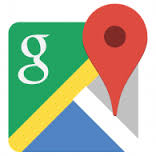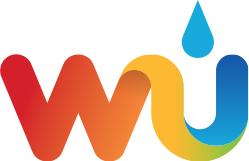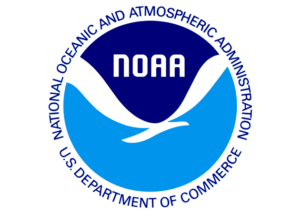 Whether you are starting a new research project or revising the final draft of a book manuscript, there are resources a nonfiction writer will want to keep closer at hand than a dictionary or thesaurus. Some of these references you may already be familiar with, but you may discover one or more here which belong on your desktop for handy reference.
Whether you are starting a new research project or revising the final draft of a book manuscript, there are resources a nonfiction writer will want to keep closer at hand than a dictionary or thesaurus. Some of these references you may already be familiar with, but you may discover one or more here which belong on your desktop for handy reference.
You are the subject area specialist as a nonfiction writer and there are certainly books and websites you regularly consult. When you begin a research project you will likely use search engines to find relevant literature. But you may have noticed advertisers and commercial sites have figured out how to game the algorithms in a way that buries the most pertinent material and you can go through several pages of search results before you find anything interesting. Start with a more advanced search strategy. Try Google Scholar instead of using other search engines. This will target your search to more scholarly instead of commercial sites.
 To save time and increase your efficiency in finding materials when you begin to search, start with a list of keywords. You will want both broad categories and specific terms. For example, if you are writing a book on the topic of economic inequality then create a list which might include categories like labor, CEO compensation, wages, poverty, and income. Add to your list more specific terms and phrases such as U.S. Department of Labor, Internal Revenue Service, Bureau of Labor Statistics, living wage, wealth gap, unemployment, and Frank-Dodd. As you begin to find useful materials you will discover more terms to add to your list.
To save time and increase your efficiency in finding materials when you begin to search, start with a list of keywords. You will want both broad categories and specific terms. For example, if you are writing a book on the topic of economic inequality then create a list which might include categories like labor, CEO compensation, wages, poverty, and income. Add to your list more specific terms and phrases such as U.S. Department of Labor, Internal Revenue Service, Bureau of Labor Statistics, living wage, wealth gap, unemployment, and Frank-Dodd. As you begin to find useful materials you will discover more terms to add to your list.
Searching the internet is always a good place to start a project, but once you’ve completed a thorough and sophisticated search strategy, how can you keep up to date on your topic while you’re writing? Google Alerts is one of my favorite gadgets in my desktop toolkit. Take a look at your list of keywords and decide which ones are most central to your project and then sign-up for an alert. You’ll be notified by email when anything new is posted on the internet. I also recommend you sign-up to be alerted when your name or the working title of your book is mentioned anywhere online. This isn’t an exercise in vanity as much as it is strategy for management of your online identity.
 Once you’re in the midst of writing, there are other tools which can help bring your manuscript to life. They say a picture is worth a thousand words so help your writer visualize by looking at images and translate them into text. When you can see what things look like, you can describe them in more three-dimensional terms. Google Images allows you to search by using words to pull up hundreds, if not thousands, of images. You can also do a reverse search by dropping an image into the search bar and Google will find the source. The Getty Research Institute has an amazing photo archive with two million photographs and you can find almost anything related to western art, architecture, and decorative arts in their collection. Another great site to get a sense of how things looked is the Life Magazine photo archive. These visuals trigger your creative writing muse. And if you are looking for images which you’d like to include in your publication, the New York Public Library offers access to a phenomenal digital collection of more than 180,000 items which are in the public domain, which means you can use them without copyright permission and there are no restrictions on use. Whatever your subject area, you can find image or photo archives to help you write richer, thicker descriptions.
Once you’re in the midst of writing, there are other tools which can help bring your manuscript to life. They say a picture is worth a thousand words so help your writer visualize by looking at images and translate them into text. When you can see what things look like, you can describe them in more three-dimensional terms. Google Images allows you to search by using words to pull up hundreds, if not thousands, of images. You can also do a reverse search by dropping an image into the search bar and Google will find the source. The Getty Research Institute has an amazing photo archive with two million photographs and you can find almost anything related to western art, architecture, and decorative arts in their collection. Another great site to get a sense of how things looked is the Life Magazine photo archive. These visuals trigger your creative writing muse. And if you are looking for images which you’d like to include in your publication, the New York Public Library offers access to a phenomenal digital collection of more than 180,000 items which are in the public domain, which means you can use them without copyright permission and there are no restrictions on use. Whatever your subject area, you can find image or photo archives to help you write richer, thicker descriptions.

Who hasn’t used Google Maps? Most of us are familiar with this tool to make our way across town, or across country. But it can also be a helpful writing tool. It can provide some geographic perspective to your writing about a place or setting. You can quickly measure distances between two locations and get an estimate of travel time—on foot or driving. This online service allows you access to maps of locations around the world. Street views offer you a visual perspective without having to visit.
 Wonder what the weather was like on the day something significant happened in your story? Weather Underground allows you to search for a city or zip code in the U.S. and a date in history as far back as 1949 to find out the weather conditions. This tool can be useful for more than description of the scene, but as a fact checking tool. If an eyewitness describes the weather on that day as different than found in the historical record, you will be more likely to consider the rest of their testimony as less credible.
Wonder what the weather was like on the day something significant happened in your story? Weather Underground allows you to search for a city or zip code in the U.S. and a date in history as far back as 1949 to find out the weather conditions. This tool can be useful for more than description of the scene, but as a fact checking tool. If an eyewitness describes the weather on that day as different than found in the historical record, you will be more likely to consider the rest of their testimony as less credible.
When you are writing about historical events, it is always important to provide the reader with a larger historical context. Tools to help you provide factual details on the milieu of a specific time period include OnThisDay and HistoryMole.
 If you are doing research and discover materials in a foreign language there are ways to decipher the text in a way to determine whether or not it might be relevant or useful to dig deeper. Google Translator Toolkit instantly translates foreign languages found in your searches into English. I can’t recommend this as a substitute for translation of full articles or books, but it is a handy tool to determine whether or not something might be worth your time and effort in exploring further.
If you are doing research and discover materials in a foreign language there are ways to decipher the text in a way to determine whether or not it might be relevant or useful to dig deeper. Google Translator Toolkit instantly translates foreign languages found in your searches into English. I can’t recommend this as a substitute for translation of full articles or books, but it is a handy tool to determine whether or not something might be worth your time and effort in exploring further.
When you are writing up your research, there may be occasions when you need to make the material more comprehensible to your reader in terms they can understand. Whether it is the price of something given in British pounds or Canadian dollars, temperatures in Celsius instead of Fahrenheit, or clothing sizes, there’s a tool for that. Online Conversion is a resource to convert just about anything; weights, measures, metric, temperatures.
 There are many government sites which offer a wealth of information and a good place to start is that National Archives and Records Administration. If you are searching for veterans’ service records, they are in the national archives at this link. The Census Bureau provides a helpful site, American Fact Finder. The National Oceanic and Atmospheric Adminstration—NOAA—has a wealth of information including charts and images of oceans and coastal areas, sanctuary permits, fisheries regulations, satellite imagery, climate data, and so much more.
There are many government sites which offer a wealth of information and a good place to start is that National Archives and Records Administration. If you are searching for veterans’ service records, they are in the national archives at this link. The Census Bureau provides a helpful site, American Fact Finder. The National Oceanic and Atmospheric Adminstration—NOAA—has a wealth of information including charts and images of oceans and coastal areas, sanctuary permits, fisheries regulations, satellite imagery, climate data, and so much more.
 There are a number of databases which you can use at your local public library (or logged into your local library’s site with your patron ID) that would otherwise be quite expensive to use as research tools. Newspaper Archive, Military and Government Collection, PubMed, Consumer Reports, ERIC (Education Resources Information Center), and Ancestry.com. The best unnamed source in every writer’s toolkit is the reference librarian. Don’t overlook this valuable resource when you are searching for information you need for your book.
There are a number of databases which you can use at your local public library (or logged into your local library’s site with your patron ID) that would otherwise be quite expensive to use as research tools. Newspaper Archive, Military and Government Collection, PubMed, Consumer Reports, ERIC (Education Resources Information Center), and Ancestry.com. The best unnamed source in every writer’s toolkit is the reference librarian. Don’t overlook this valuable resource when you are searching for information you need for your book.
Local libraries and historical societies often have materials you won’t find online. But you can find the locations and descriptions of their collections by searching the internet. Some of the most interesting material for your project will likely be in these collections. Don’t overlook them.
If you are writing a nonfiction book, facts are the building blocks of your prose. Use these tools to get the facts, but even more importantly, to check them, double-check them, and corroborate your sources.
